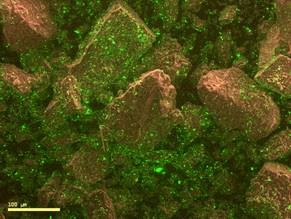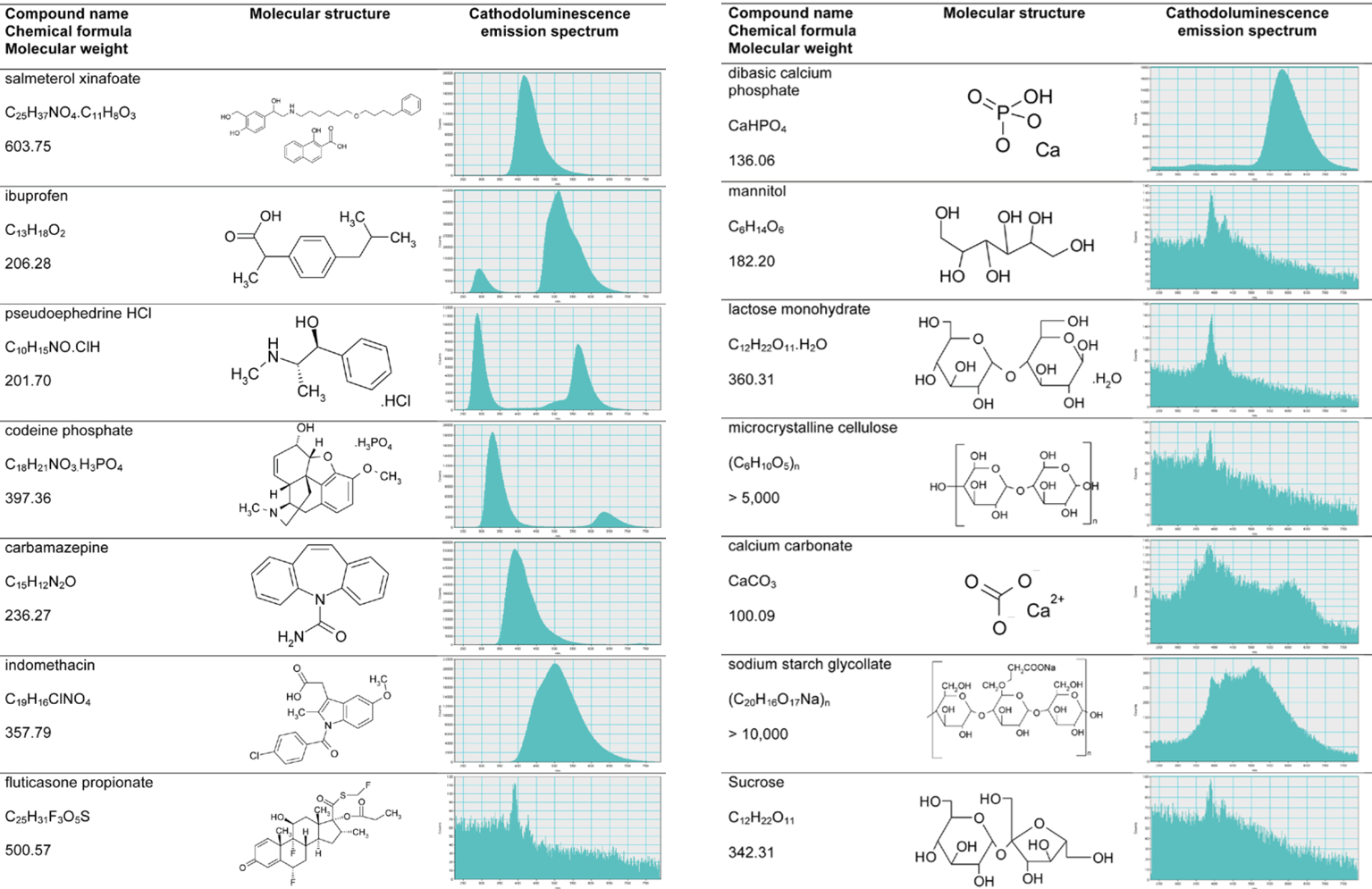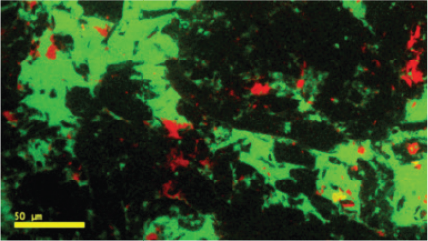Pharmaceuticals

Cathodoluminescence (CL) analysis complements other spectroscopic and imaging tools researchers use to understand, develop, and manufacture solid-dosage medicinal products. The luminescence signatures of an organic molecule stem from the molecule's chemical structure (HOMO-LUMO gap) rather than sample composition. Up to 80% of active pharmaceutical ingredients (APIs) strongly exhibit CL in the scanning electron microscope compared to only 20% of excipients.
Due to the different crystal structures, researchers also use CL to distinguish the solid forms of some drug compounds. For example, the four polymorphs of carbamazepine and the crystalline and amorphous forms of indomethacin. These observations enable the identification of changes to the solid form of an API after it is formulated into a tablet, pellet, or blend.

Experimental briefs and application notes
 |
A new role for cathodoluminescence spectroscopy and imaging as an analytical tool to support the development of pharmaceutical products |